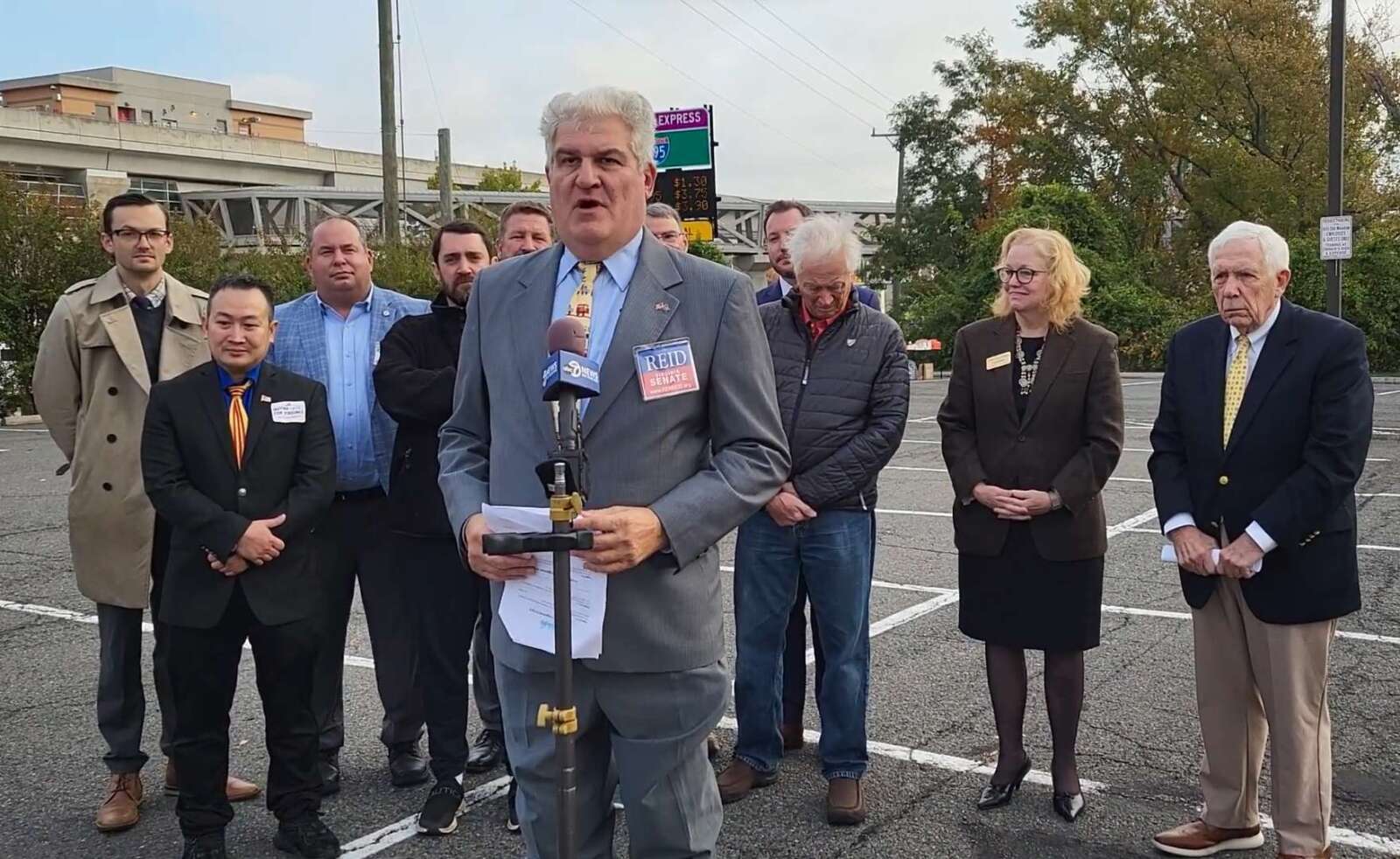
(Updated at 9:30 p.m. on 10/26/2023) Several Republicans campaigning to represent parts of Fairfax County in the General Assembly have vowed to change up Virginia’s interstate tolling system if they’re elected on Nov. 7.
With the McLean Metro station in Tysons as a backdrop, the candidates unveiled a “Tolling Equity and Relief Plan” last Friday (Oct. 20) that they argued would reduce congestion and lower the cost of using the Express Lanes on I-66 and the Capital Beltway (I-495).
Crafted by former Congressman Frank Wolf, who represented Virginia’s 10th district from 1981 to 2015, the proposal calls for frequent Express Lanes drivers to get rebates from toll and state tax revenues, lower high-occupancy vehicle requirements, and standardization of toll rates on I-66 inside and outside the Beltway.
“We are hearing many complaints about the high cost of the tolls — especially on the new I-66 express lanes but also I-495 and other toll roads, which is adding to the cost of living of Northern Virginia families,” said Ken Reid, who organized the press conference. “Government must do its part to give the region’s motorists a break.”
A former Loudoun County supervisor, Reid is vying for the State Senate District 37 seat against Saddam Azlan Salim, who won the Democratic primary in June over longtime Sen. Chap Peterson. The district includes Tysons, Vienna, Oakton, Merrifield and the cities of Fairfax and Falls Church.
Other candidates who endorsed the proposed legislation include:
- Mark Springman, competing for Senate District 34 against incumbent Scott Surovell
- Matt Lang, competing for Senate District 38 against Sen. Jennifer Boysko in a district reshaped by redistricting
- Kristin Lee Hoffman, competing for House District 6 against Del. Rip Sullivan
- Maxwell Fisher, competing for House District 8 against incumbent Irene Shin
- Nhan Huynh, competing for House District 9 against incumbent Karrie Delaney
- James Thomas, competing for House District 10 against incumbent Dan Helmer
- Ed McGovern, competing for House District 18 against Del. Kathy Tran
According to a press release from Reid’s campaign, the Tolling Equity and Relief plan would offer rebates to commuters who use the I-66 and/or I-495 Express Lanes more than 30 times a month, similar to a SunPass toll relief program that took effect in Florida this year.
The plan would also reinstate HOV-2 “at certain hours” on both interstates. Drivers were able to use the I-66 Express Lanes for free if they had at least two passengers until last December, when the Virginia Department of Transportation raised the requirement to HOV-3.
Per the press release, the plan would allocate toll revenue to widening I-66 to three lanes in each direction from the Dulles Access Road in Pimmit Hills to the Nash Street tunnel in Rosslyn.
“No funds would go to bike trails or other modes of transit until that project is done,” Reid’s campaign said.
Virginia currently uses I-66 and I-395/95 toll revenue for a Commuter Choice grant program that supports road and public transit improvement projects in those corridors. Recently funded projects include a north entrance for the McLean Metro station and Fairfax City’s first Capital Bikeshare stations. Read More
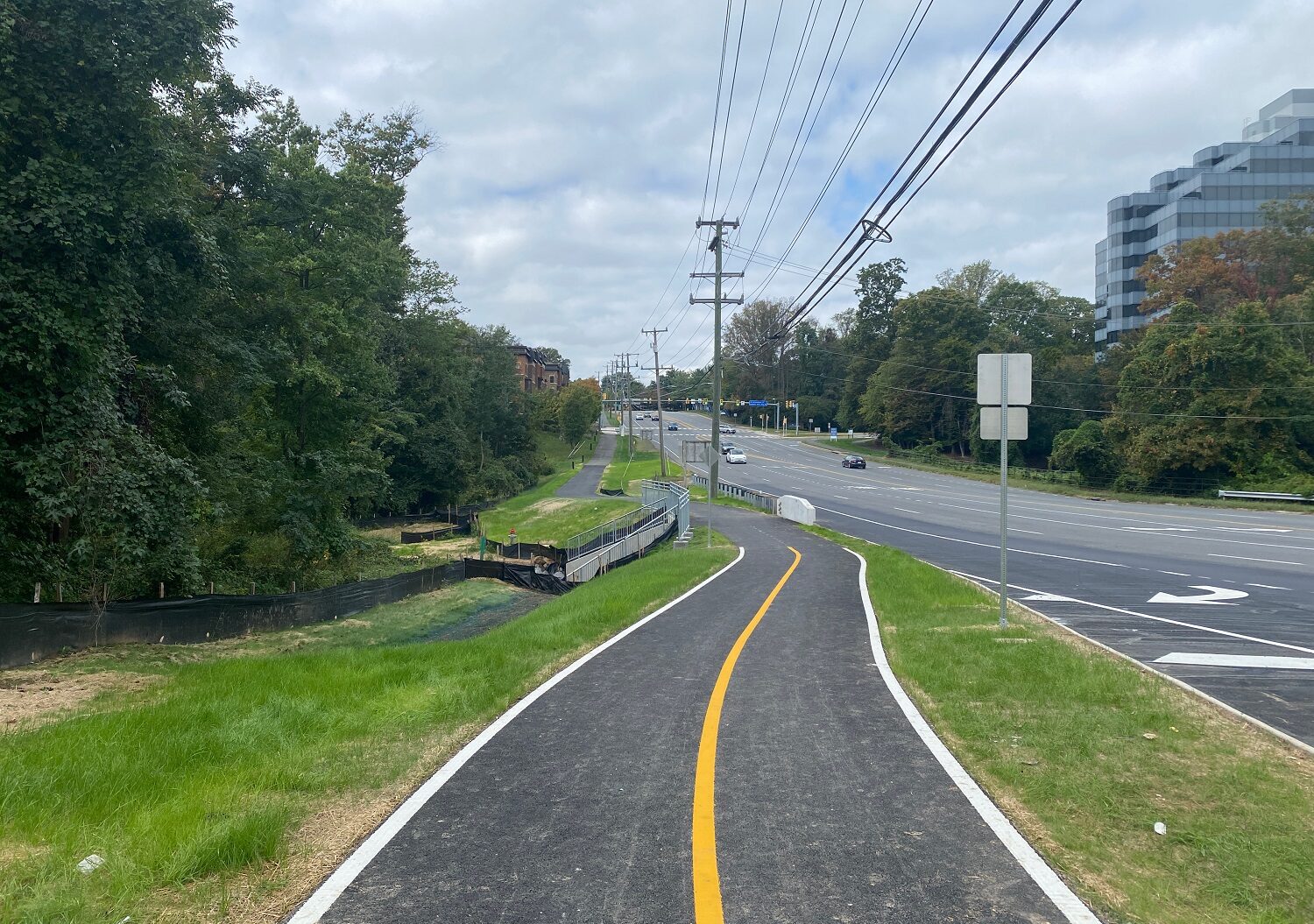
A ditch will no longer force pedestrians and bicyclists to ditch the shared path along Route 29 in Merrifield.
Construction has been substantially completed on a new, unbroken shared-use path spanning about one-third of a mile between Vaden Drive and Nutley Street, the Virginia Department of Transportation announced on Friday (Oct. 6).
The path replaces an asphalt sidewalk that abruptly ended at an Accotink Creek tributary that runs under the roadway. In addition to filling in some missing segments, the project added a central yellow line to the new trail and extended a box culvert over the tributary to support it.
In the works since spring 2019, construction on the improvements began in November 2022. The project cost an estimated $3.8 million, funded by local dollars and a concession fee that the I-66 Express Lanes operator agreed to provide as part of the Outside the Beltway toll lanes extension.
“Construction on the project…is now substantially complete, with minor work occurring in the coming weeks until final completion with minimal impacts,” VDOT said.
#Merrifield area bicyclists & pedestrians – enjoy your new shared-use path along NB Rt 29 from Vaden Dr to Nutley St! This project constructed missing path segments and extended a culvert to carry the new path over an Accotink Creek tributary. 🚴🚶
More: https://t.co/YXq3jlHWhL pic.twitter.com/PeK2t2vq6c
— VDOT Northern VA (@VaDOTNOVA) October 6, 2023
While the new path isn’t especially long, it provides a crucial connection for pedestrians and cyclists to the nearby Vienna Metro station and other area sidewalks and trails, including ones in Towers Park, VDOT says.
However, that accessibility still ends at Nutley Street, since the south side of Route 29 has no sidewalk east of the intersection.
As part of a plan to redevelop the Pan Am Shopping Center, Fairfax County staff recommend implementing “continuous bicycle and pedestrian facilities along Route 29” in the future. The existing Bicycle Master Plan doesn’t show any trail on the south side and indicates that “further analysis and outreach is needed to determine the best fit for bicycle facilities along this roadway,” according to the amendment approved by the Board of Supervisors on Sept. 12.
Developer Federal Realty, which owns the shopping center, has proposed adding a 10-foot-wide shared-use path along Nutley Street with the redevelopment. To the north, VDOT is working to complete its I-66 shared-use trail, which opened a first segment in May that included a tunnel under Nutley.
As of Aug. 9, most remaining sections were slated to open this October, according to VDOT’s project website. That excludes a segment through the Route 50 interchange that’s not projected to open until spring 2024.
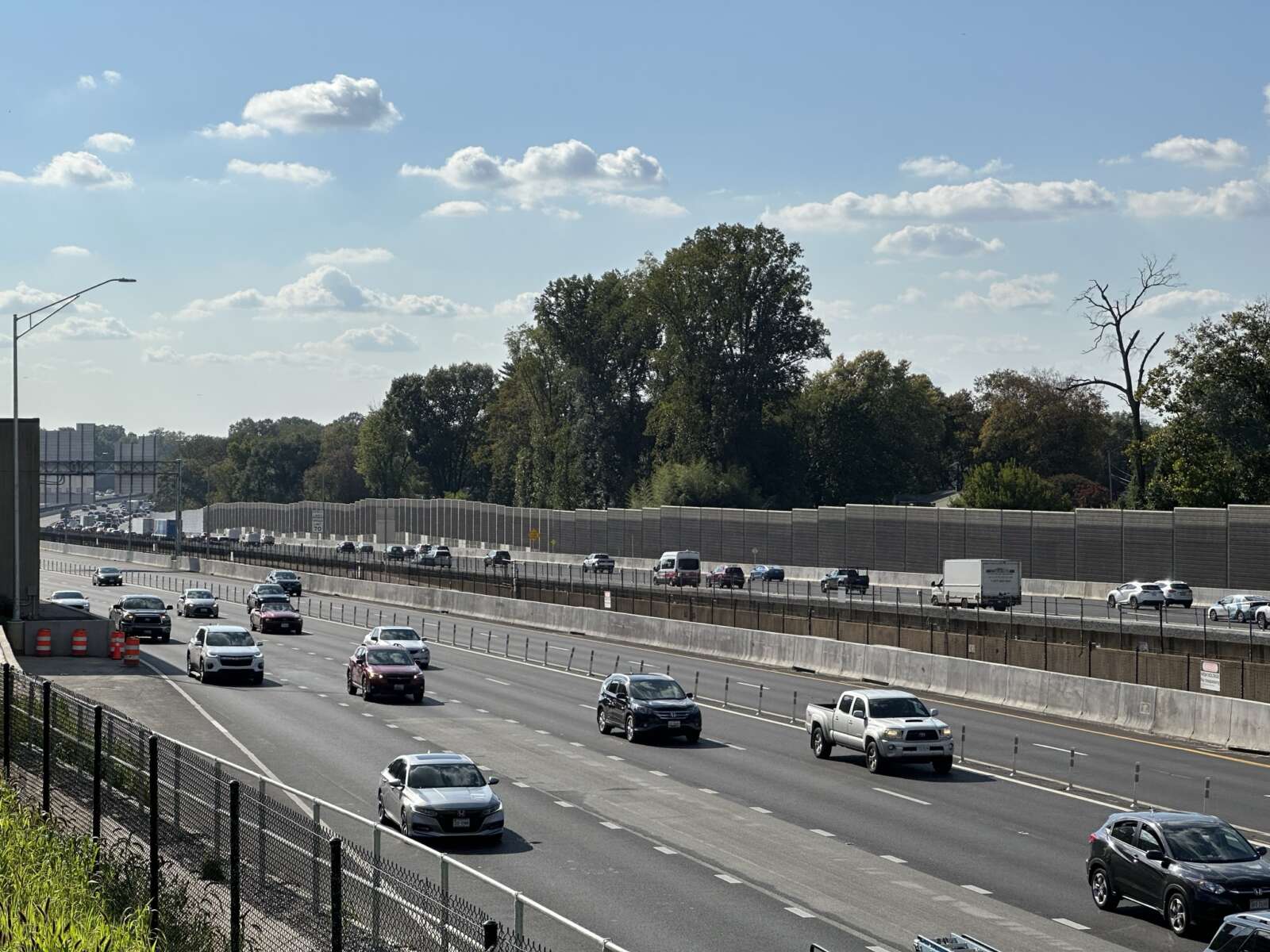
Planning officials in the Shenandoah Valley and central Virginia fear proposals to change Virginia’s transportation funding system could significantly reduce state funding for smaller transportation projects for cyclists and pedestrians.
The Commonwealth Transportation Board has been reviewing the state’s transportation funding process, SMART SCALE, which has been in place for the past seven years.
Some of the proposals being considered by the board include favoring larger transportation projects over smaller ones, lowering the number of applications local governments and planning organizations can submit and reducing the weight given to land use in applications.
Significantly, many bike and pedestrian projects could go unfunded under the proposed changes. According to data collected by a working group made up of Virginia’s Office of Intermodal Planning and Investment, which advises state transportation leaders, and several consultants, 75% of the bike and pedestrian projects recently funded through SMART SCALE would have gone unfunded under the new rules.
“We certainly think there’s a lot of focus on highway road expansion statewide and no focus on climate change impacts with this approach,” said Stewart Schwartz, executive director of the Coalition for Smarter Growth.
Trip Pollard, a senior attorney with the Southern Environmental Law Center and leader of its Land and Community Program, said he’s concerned the proposed changes to SMART SCALE will harm the state’s ability to meet its goals of reducing air pollution and protecting the environment.
“Staff is doing some great work on this and there are some good reasons for some of these changes, but cumulatively, I definitely don’t agree with them,” Pollard said. “I think it really fundamentally shifts where the money is going to go.”
Other changes attempt to evaluate projects over a longer time scale. For example, the working group is recommending that the Commonwealth Transportation Board consider adding to the application process a project’s congestion benefits 10 years into the future and forecast the economic value of a project.
“What we’re doing here is trying to get at the metrics that better show us the value so that we can apply that in our scoring system,” said Transportation Secretary Shep Miller at the board’s Sept. 20 work session.
Making room for larger projects
One of the most controversial recommendations made by the working group, which has been reviewing the SMART SCALE proposals since March, is for Virginia to expand its definition of “high-priority projects,” or projects that have a regional or statewide significance.
Currently, state law defines high-priority projects as those that “reduce congestion or increase safety, accessibility, environmental quality or economic development.”
The working group is recommending adding to that list projects that include “new capacity highway, managed lanes, new or improved interchanges, new or improved passenger rail stations or service, freight rail improvements, high-capacity fixed guideway transit, transit transfer stations, and new bridge.”
Planning leaders from the Shenandoah Valley and central Virginia, however, worry that expanding the high-priority designation could edge out other, smaller kinds of transportation proposals by weighting decisions against them. That could force local governments to find other sources of funding. Read More
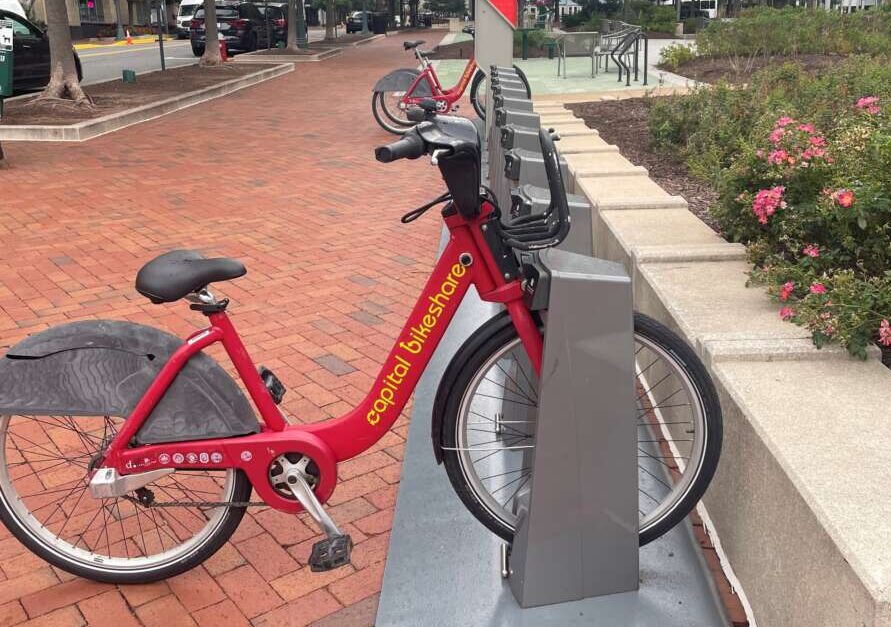
A total of six new Capital Bikeshare stations may soon arrive around the Innovation Center Metro station.
The Fairfax County Department of Transportation will host a meeting this coming Wednesday (Oct. 4) to discuss the proposal. The virtual meeting begins at 7 p.m.
So far, proposed locations include:
- Innovation Metro South
- Corta Way and Sayward Boulevard
- Coppermine Road and River Birch Road
- Dulles Technology Drive and Sunrise Valley Drive
- Woodland Park Road and Cooperative Way
- McNair Farms Drive and Thomas Jefferson Drive
Comments on the proposal will be accepted through Friday, Oct. 20.
County staff will then work with supervisors John Foust (Dranesville) and Walter Alcorn (Hunter Mill) as well as the Virginia Department of Transportation to install the equipment sometime next year, according to Freddy Serrano, a spokesperson for FCDOT.
“The recently opened Innovation Center Metro provides an ideal first and last mile destination for Capital Bikeshare riders. County staff also wanted to propose expansion into Supervisor Districts with few, if any existing stations such as [the] Dranesville District,” Serrano wrote in a statement.
The new stations are funded by a grant from the Federal Highway Administration. The grant covers a total of 10 stations and roughly 69 electric bicycles. Capital Bikeshare has 738 stations in the D.C. area, 79 of which are located in Fairfax County.
Next week’s meeting will also include an update on Bikeshare’s new electric bicycles, which started rolling out this spring.
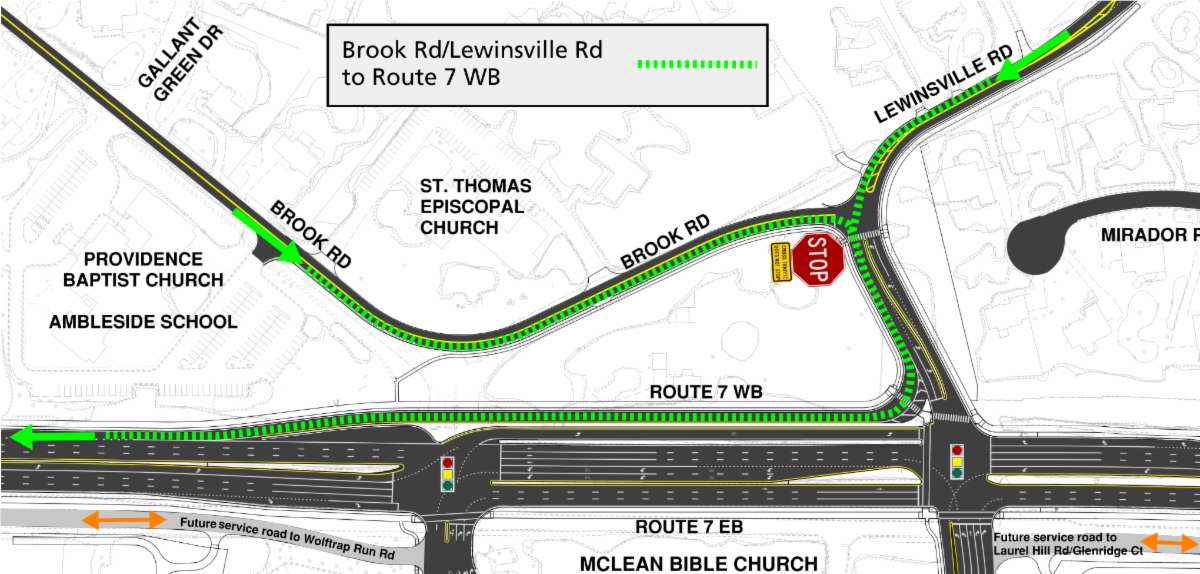
Updated at 4 p.m. on 9/26/2023 — The traffic pattern change at Lewinsville Road and Route 7 has been rescheduled for 5 a.m. on Thursday (Sept. 28), the Virginia Department of Transportation says.
Earlier: One portion of the ongoing project to widen northern Route 7 (Leesburg Pike) is complete.
The revamped Lewinsville Road intersection in the Wolf Trap area will fully open to traffic tomorrow (Tuesday) morning, the Virginia Department of Transportation recently announced.
Final work on the intersection will continue tonight into the morning, in preparation of the new traffic pattern taking effect by 5 a.m.
“Temporary traffic patterns may be in place during the overnight hours between 9 p.m. and 5 a.m. while crews complete the transition,” VDOT said. “Please use caution and be alert to directional signage that will be in place to guide drivers through the intersection.”
Under the new configuration, Lewinsville Road has been realigned with the McLean Bible Church’s east entrance on the south side of Route 7. A displaced left-turn lane separates Route 7 traffic headed east onto Lewinsville from westbound Route 7 traffic.
Traffic signals have been placed at both McLean Bible Church entrances, but a new acceleration lane lets drivers from Lewinsville Road turn right onto westbound Route 7 without having to stop at the light, as shown in a simulation video from VDOT.
Under construction since spring 2019, the Route 7 Corridor Improvements Project is widening the roadway from four to six lanes along a nearly 7-mile stretch from Reston Avenue to Jarrett Valley Drive just north of the Dulles Toll Road.
The $313.9 million project is also adding 10-foot-wide, shared-use paths on both sides of the corridor and reconfiguring several intersections, including Lewinsville and Baron Cameron Avenue in Reston.
Work is scheduled to be completed by July 31, 2024.
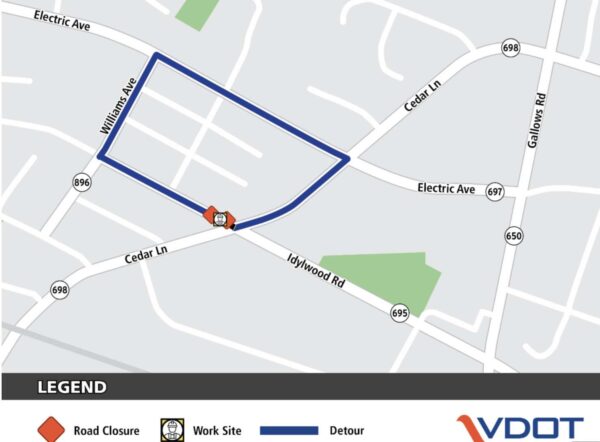
A stretch of Idylwood Road will be closed to through traffic in Dunn Loring this week.
The road between Williams Avenue and Cedar Lane will be closed from today (Monday) to Thursday (Sept. 14) from 9 a.m. to 3 p.m. for stormwater pipe replacement, according to the Virginia Department of Transportation (VDOT).
Properties along Idylwood Road will have access, but traffic will not be able to go beyond the pipe replacement in both directions.
“Through traffic will be detoured via Idylwood Road, Williams Avenue, Electric Avenue (Route 697) and Cedar Lane back to Idylwood Road. Drivers are asked to follow posted detour signs,” VDOT wrote in a statement.
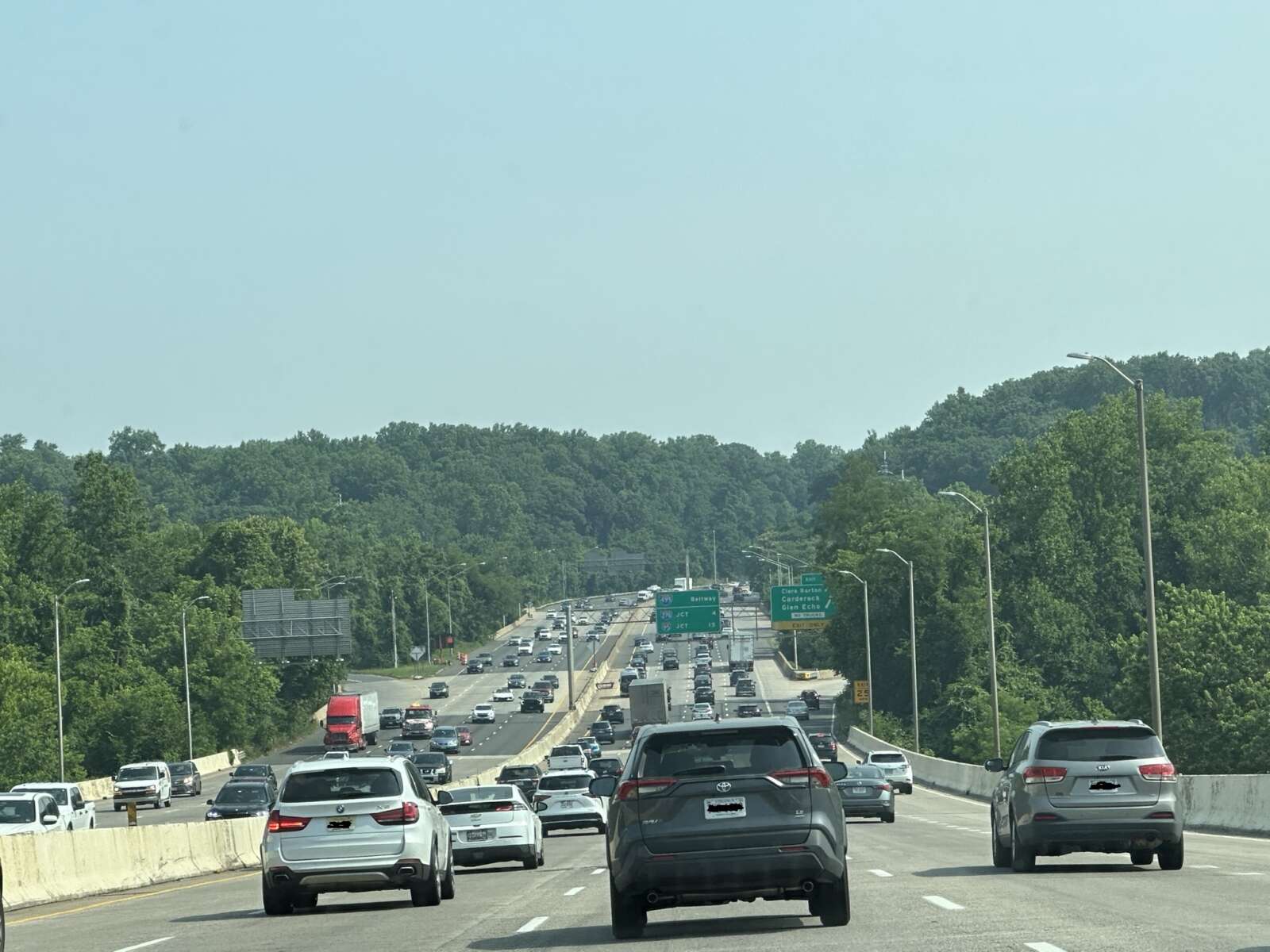
(Updated at 9:35 a.m. on 8/22/2023) Maryland has renewed its commitment to replacing the American Legion Bridge and adding express lanes on the Capital Beltway, much to the relief of Northern Virginia transportation officials.
The Maryland Department of Transportation has applied for a federal grant to fund the initial phase of its project to widen the Beltway (I-495/I-270) and reconstruct the aging bridge, which provides the only road connection between Fairfax County and Montgomery County, Maryland Gov. Wes Moore announced today (Monday).
The announcement is the first indication of how Maryland will proceed since private express lanes operator Transurban backed out in March over concerns about delayed environmental approvals, lawsuits and the change in leadership after Moore succeeded Larry Hogan in January.
Since Hogan and then-Virginia governor Ralph Northam announced an agreement in 2019 to replace the heavily used American Legion Bridge, Maryland’s cooperation has been seen as critical to the success of Virginia’s I-495 Northern Extension (495 NEXT) project, which is now under construction and will extend the Beltway’s toll lanes from the Dulles Toll Road in Tysons to the bridge north of McLean.
“Governor Moore’s plan ensures these long-awaited improvements will become a reality. This is great news for area travelers and the economic competitiveness of our entire region,” Northern Virginia Transportation Alliance President Jason Stanford said in a statement. “The Alliance applauds Governor Moore for finding a multimodal solution to address one of the region’s worst bottlenecks and move more people through one of our most congested corridors.”
The Virginia Department of Transportation has estimated that 495 NEXT will move 2,500 more people per hour in both directions when the express lanes open in 2025. However, it would move 5,400 more people an hour with Maryland’s project in place.
Skeptics of 495 NEXT, including Dranesville District Supervisor John Foust, have argued that widening I-495 in Virginia without a concurrent widening in Maryland will only push the existing congestion further north, leaving McLean residents to deal with the traffic, environmental and neighborhood impacts without getting any of the supposed benefits.
Noting that many details of Moore’s plan have yet to be shared, such as what kind of “managed lanes” will be involved, Foust called the announcement “great news” as a sign that Maryland is committed to helping address congestion on the American Legion Bridge.
However, assuming it secures the necessary approvals and funding, the Maryland project will still likely take years to complete, Foust said in a statement.
The estimate I have seen is that the project could be complete in eight years (by 2031) if all goes well. Unfortunately, that means commuters who cross the American Legion Bridge, and residents of the communities around the bridge, will continue to suffer from the impacts of severe congestion for at least that long unless something is done in the interim. Given the miserable traffic conditions around the bridge, eight years is too long to wait for any relief. That is why I believe VDOT needs to deliver interim solutions that mitigate the congestion impacts over the bridge and in the surrounding neighborhoods.
The 495 NEXT project was designed to seamlessly connect to a version of an American Legion Bridge project that we now know will not be built. In addition to very nasty congestion, established neighborhoods along the path of the 495 NEXT project are being severely impacted by construction activity. Given the dramatic change of plans and potentially major reduction of scope for the Maryland project, I believe VDOT should determine whether and by how much it can reduce the scope of disturbance of its project to help mitigate those construction-related impacts on the adjacent communities.
Shifting away from the public-private partnership that Hogan sought and that has built Virginia’s growing express lanes network, Moore emphasized in his announcement that Maryland’s project will incorporate transit and other multimodal improvements, including pedestrian and bicycle access. Read More
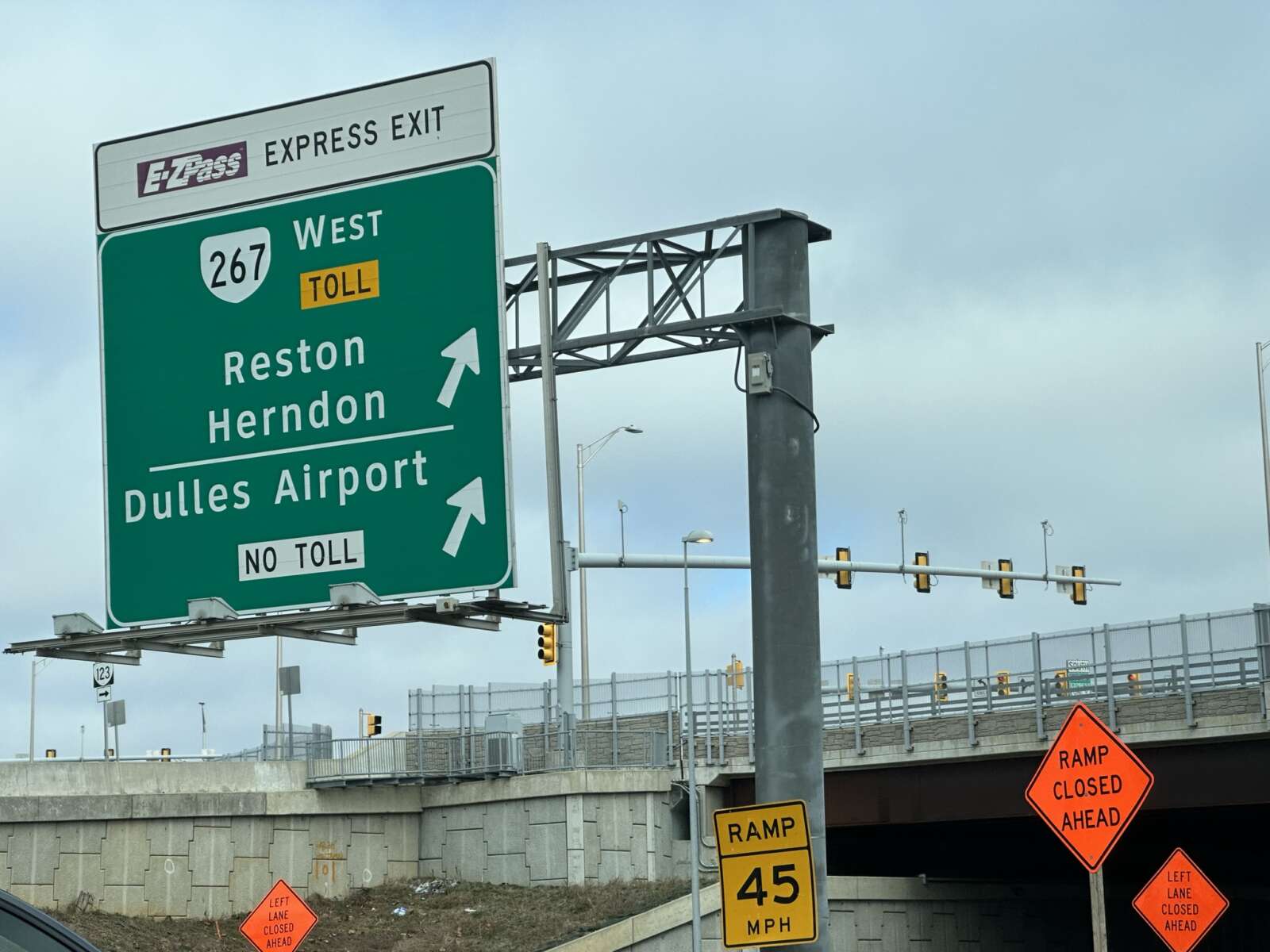
A new traffic pattern is in effect on Reston Parkway after a crash in July damaged two beams on the bridge over the Dulles Toll Road.
The left lane of the road is closed to reduce the weight placed on the damaged beams. The Metropolitan Washington Airports Authority (MWAA) is working to arrange the repairs on the underside of the bridge.
“Having lost a lane of capacity on southbound Reston Parkway, a longer term pattern was put in place to regain some capacity in the form of a choice lane,” Ellen Kamilakis, a spokesperson for the Virginia Department of Transportation, told FFXnow.
The truck crash happened several months ago, Kamilakis said. The left lane of the the southbound Reston Parkway over the toll road was closed on July 10.
While the left lane is still closed, the ramp to the eastbound toll road was re-striped as an exit and thru lane.
Hey Restonians! We know the left lane of SB Reston Pkwy over @dulles_toll_rd was closed after the bridge hit on 7/10. We're making a traffic pattern change to regain capacity. The left lane is still closed, but the ramp to EB DTR was restriped as an exit *and* a thru lane. pic.twitter.com/ha5ykz7AYg
— VDOT Northern VA (@VaDOTNOVA) August 16, 2023
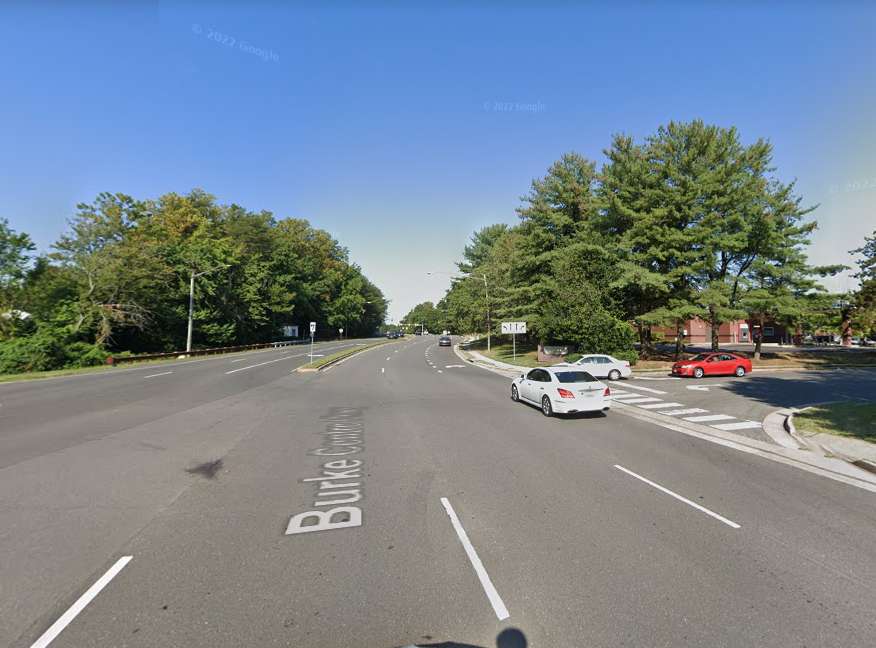
In October, the Virginia Department of Transportation will put together recommended improvements for the portion of Burke Centre Parkway where a fatal crash occurred last month.
The recommendations will come after VDOT staff can review the official police investigative report on the crash in September. The department is also planning to conduct studies on potential speed limit changes and the feasibility of a traffic signal in September and October.
The exact dates when the recommended improvements will be presented and implemented are to be determined, VDOT Assistant District Administrator Steven Welch said at a virtual community meeting about the parkway Tuesday night (August 15).
The timeline for implementation can depend on the nature of the changes. A median closure would take less time put in place than a new traffic signal, for example, Welch said.
“The range is really wide,” he said.
Welch also recapped safety improvements made on Burke Centre Parkway in the last three years, which include removing the flashing yellow arrow from 3:30 to 5:30 p.m. at the intersection of Burke Centre Parkway and Roberts Parkway and adding pedestrian warning signs at four crosswalks.
More than 70 people attended the virtual community meeting, which Braddock District Supervisor James Walkinshaw hosted in the wake of the July 18 crash that killed 17-year-old Rebekah Zarco and hospitalized three other teens.
The bulk of the roughly hour-long meeting featured questions and comments from community members, including on the possibility that the July crash involved cars racing.
“In the days after the crash, we did hear there may have been vehicles racing,” said Second Lt. Ian Yost, a crash reconstruction unit supervisor in the Fairfax County Police Department’s traffic division.
Police say 42-year-old Burke resident Jose Angel Zelaya, who was arrested on Aug. 1 and has been charged with involuntary manslaughter, was driving at almost double the 40-mph speed limit when he crashed into the car of teens.
District 37 State Sen. David Marsden said he was intrigued by the potential connection to racing. He said he has submitted a bill to the General Assembly to deal with loud vehicle muffler noise.
“Certainly loud mufflers don’t cause people to race, but it certainly is indicative of some desire to be aggressive with your car, at least its noise and perhaps its speed,” Marsden said.
Some community members asked about the possibility of adding speed cameras. Under a 2020 state law, Fairfax County can place speed cameras in school and construction zones. A pilot program with cameras outside eight schools has been underway since February.
“Where we are right now is we recently started the school zone pilot program,” Walkinshaw said. “I anticipate we’ll want to expand that to other schools around the county and use that to learn and maybe advocate for additional authorities from the General Assembly in Richmond to do more.”
Multiple community members also brought up the possibility of adding a median barrier at the intersection outside the Burke Centre Shopping Center where the crash occurred.
At the meeting, FCPD officers also provided a brief overview of the department’s recent traffic safety efforts, including the summer “Road Shark” campaign and recent traffic enforcement on Burke Centre Parkway.
FCPD’s motor unit issued 440 citations while conducting “high visibility enforcement” on the roadway between July 24 and July 29, according to a presentation at the meeting.
Community members who have questions or comments about Burke Centre Parkway can contact Walkinshaw’s office at braddock@fairfaxcounty.gov or 703-425-9300. The FCPD says anyone who may have witnessed something related to the July 18 crash can contact its crash tip line at 703-280-0543.
Image via Google Maps
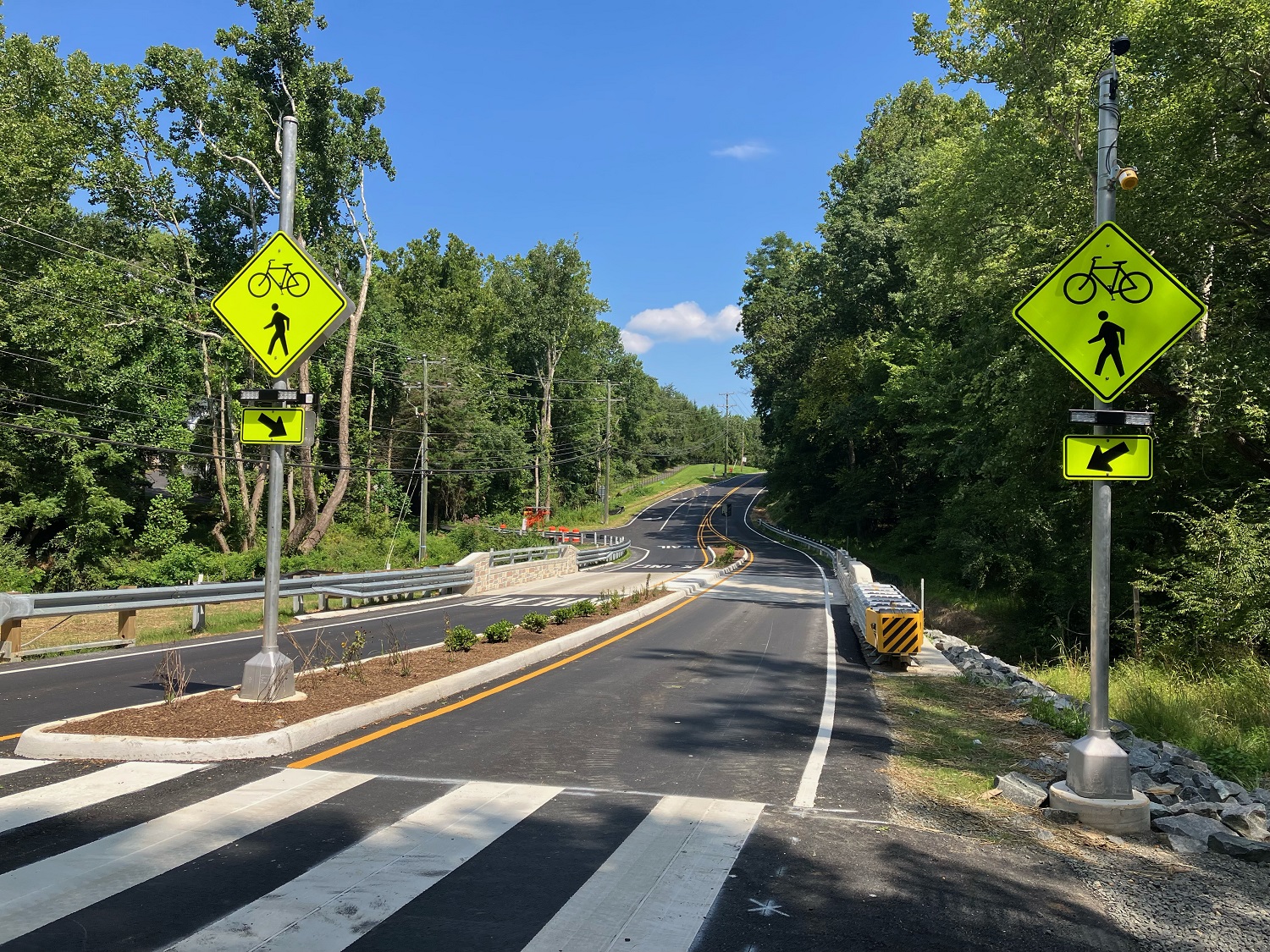
A critical vehicular link between Reston and the Wolf Trap area has been restored.
The new, two-lane Hunter Mill Road bridge over Colvin Run is now fully open, the Virginia Department of Transportation announced yesterday (Wednesday).
Located near Baron Cameron Avenue between Lake Fairfax Park and Colvin Run Park, the expanded bridge has one travel lane in each direction, saving drivers from the hassle and potential confusion of having to yield to oncoming traffic.
More on the project from VDOT:
The new bridge (located between the Dulles Toll Road and Baron Cameron Avenue):
- Improves traffic flow by replacing the nearly 50-year-old weight-restricted one-lane bridge that required drivers to stop if there was traffic crossing the bridge in the other direction
- Includes a median/splitter island separating the two lanes to improve safety
The Hunter Mill Road over Colvin Run Bridge Replacement project, which is now complete, also includes:
- An improved trail crossing south of the bridge
- Landscaping in the median/splitter island
- Abutments for a future trail bridge over Colvin Run (the rest of the trail bridge will be constructed by Fairfax County)
Construction on the project began approximately two years ago in August 2021. Built in 1974, the previous bridge had just one lane and was limited to carrying 10 tons at a time, even though the road was used, on average, by 8,500 vehicles per every day, as of 2019.
One lane of the new span was completed in December.
The project cost a total of $5.2 million, relying on funds from the federal, state and Fairfax County governments.
Hunter Mill Rd drivers don't need to yield to oncoming traffic at Colvin Run in #Vienna anymore – the two-lane bridge fully opened today! The now complete project also includes a raised median and an improved trail crossing south of the bridge.
Read more: https://t.co/N92AqLAo8P pic.twitter.com/yMjBU8R87H
— VDOT Northern VA (@VaDOTNOVA) August 9, 2023

